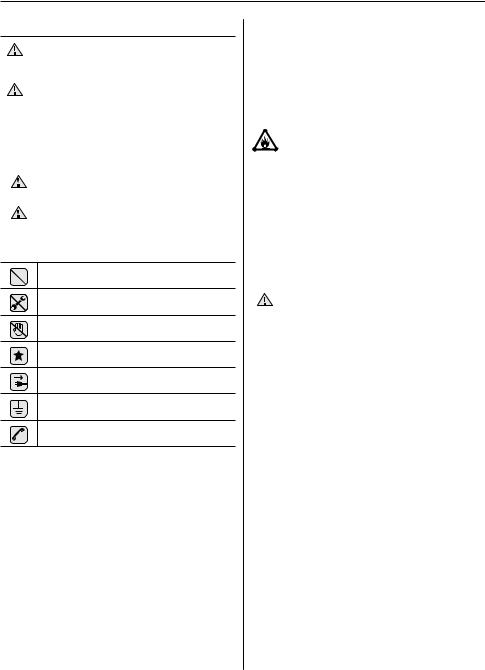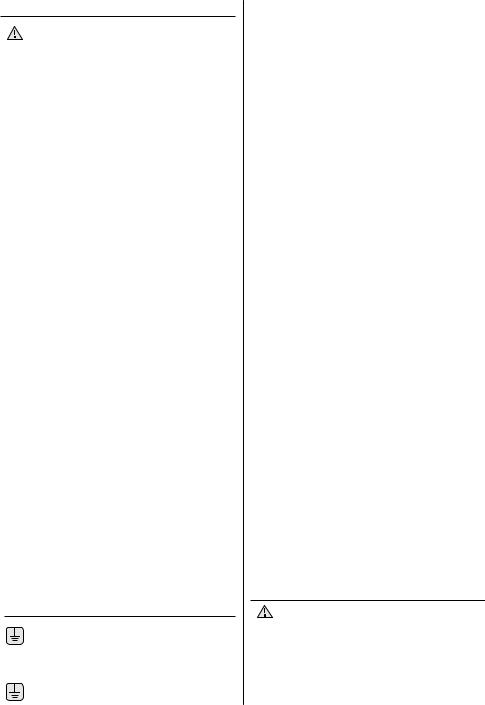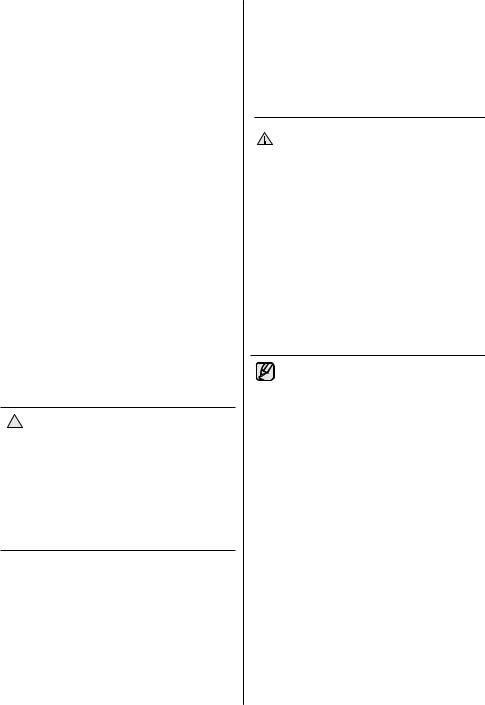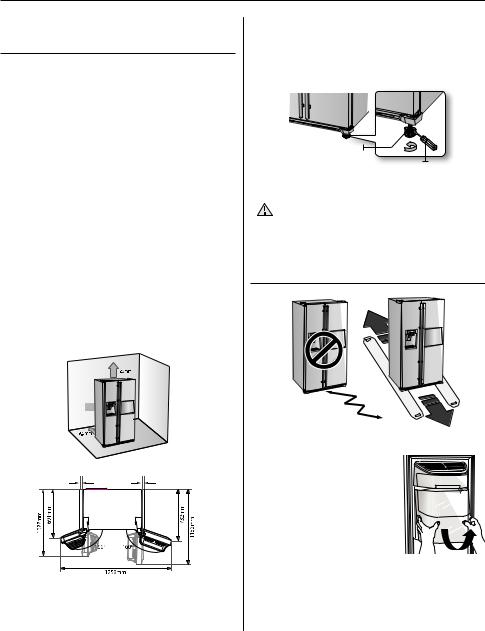Samsung SRS690GDLS, SRS691GDIS, SRS712GNW, SRS684GDHSS, SRS713GNIS Manual
...
Refrigerator
user manual
This manual is made with 100% recycled paper. |
English |
imagine the possibilities
Thank you for purchasing a Samsung product. To receive a more complete service,
please register your product at www.samsung.com/register
Free Standing Appliance

safety information
SAFETY INFORMATION
• |
Before operating the appliance, please |
WARNING |
read this manual thoroughly and retain it |
|
for your reference. |
• |
Because these following operating |
WARNING |
instructions cover various models, the |
|
characteristics of your refrigerator may |
|
differ slightly from those described in this |
|
manual. |
CAUTION/WARNING SYMBOLS USED
|
Indicates that a danger of death or |
WARNING |
serious injury exists. |
|
|
|
Indicates that a risk of personal injury or |
CAUTION |
material damage exists. |
|
|
OTHER SYMBOLS USED
Represents something you must NOT do.
Represents something you must NOT disassemble.
Represents something you must NOT touch.
Represents something you must follow.
Indicates that you must disconnect the power plug from the socket.
Represents a ground is needed to prevent electric shock.
It is recommended that this symbol be handled by service man.
These warning signs are here to prevent injury to you and others.
Please follow them explicitly.
After reading this section, keep it in a safe place for future reference.
CE Notice
This product has been determined to be in compliance with the Low Voltage Directive (2006/95/EC), the Electromagnetic Compatibility Directive (2004/108/EC) and the Eco-Design Directive(2009/125/EC) implemented by Regulation (EC) No 643/2009 of the European Union.
•This refrigerator must be properly installed and located in accordance with the manual before it is used.
02_ safety information
•Use this appliance only for its intended purpose as described in this instruction manual.
•We strongly recommend that any servicing be performed by a qualifi ed individual.
•R600a or R134a can be used as a refrigerant. Check the compressor label on the rear of the appliance and the rating label inside the fridge to see which refrigerant is used for the refrigerator.
• In case of R600a refrigerant, this gas is natural gas with high environmental compatibility that is, however, also combustible. When transporting and installing the appliance, care should be taken to ensure that no parts of the refrigerating circuit are damaged.
•Refrigerant squirting out of the pipes could ignite or cause an eye injury. If a leak is detected, avoid any naked fl ames or potential sources of ignition and air the room in which the appliance is standing for several minutes.
•In order to avoid the creation of a fl ammable WARNING gas-air mixture if a leak in the refrigerating
circuit occurs, the size of the room in which the appliance may be sited depends on the amount of refrigerant used.
•Never start up an appliance showing any signs of damage. If in doubt, consult your dealer.
•The room must be 1m3 in size for every 8g of R600a refrigerant inside the appliance.
•The amount of refrigerant in your particular appliance is shown on the identifi cation plate inside the appliance.
•Please dispose of the packaging material for this product in an environmentally friendly manner.
•This appliance is not intended for use by persons (including children) with reduced physical, sensory or mental capabilities, or lack of experience
and knowledge, unless they have been given supervision or instruction concerning use of the appliance by a person responsible for their safety.
•Children should be supervised to ensure that they do not play with the appliance.

SEVERE WARNING SIGNS
• Do not install the refrigerator in a damp WARNING place or place where it may come in
contact with water.
- Deteriorated insulation of electrical parts may cause an electric shock or fi re.
•Do not place this refrigerator in direct sunlight or expose to the heat from stoves, room heaters or other appliance.
•Do not plug several appliances into the same power socket. The refrigerator should always be
plugged into its own individual electrical which has a voltage rating that matched the rating plate.
- This provides the best performance and also prevents overloading house wiring circuits, which could cause a fi re hazard from overheated wires.
•Make sure that the power plug is not squashed or damaged by the back of the refrigerator.
•Do not bend the power cord excessively or place heavy articles on it.
- This constitutes a fi re hazard.
•Have the power cord repaired or replaced immediately by the manufacturer or its service agent if power cord has become frayed or damaged.
•Do not use a cord that shows cracks or abrasion damage along its length or at either end.
•If the power cord is damaged, have it replaced immediately by the manufacturer or its service agent.
•When moving the refrigerator, be careful not to roll over or damage the power cord.
•Do not insert the power plug with wet hands.
•Unplug the refrigerator before cleaning and making repairs.
•Do not use a wet or damp cloth when cleaning the plug.
•Remove any foreign matter or dust from the power plug pins.
- Otherwise there is a risk of fi re.
•If the refrigerator is disconnected from the power supply, you should wait for at least ten minutes before plugging it back.
•If the wall socket is loose, do not insert the power plug.
- There is a risk of electric shock or fi re.
•The appliance must be positioned so that the plug is accessible after installation.
•The refrigerator must be grounded. - You must ground the refrigerator to
prevent any power leakages or electric shocks caused by current leakage from the refrigerator.
•Never use gas pipes, telephone lines or
other potential lightening rods as ground.
-Improper use of the ground plug can result in electric shock.
•Do not dissemble or repair the refrigerator by yourself.
- You run risk of causing a fi re, malfunction and/or personal injury.
•If you smell pharmaceutical or smoke, pull out power plug immediately and contact your Samsung electronics service center.
•Keep ventilation opening in the appliance enclosure or mounting structure clear of obstruction.
•Do not use mechanical devices or any other means to accelerate the defrosting process, other than those recommended by the manufacturer.
•Do not damage the refrigerant circuit.
•Do not place or use electrical appliance inside the refrigerator/freezer, unless they are of a type recommended by the manufacturer.
•Before changing the interior light, unplug the appliance from the power supply.
•If you experience diffi culty when changing the light, contact your service center.
•The appliance is not intended for use by persons (including children) with reduced physical, sensory or mental capabilities, or lack of experience
and knowledge, unless they have been given supervision or instruction concerning use of the appliance by a person responsible for their safety.
•Children should be supervised to ensure that they do not play with the appliance.
•Do not let children hang on the door. If not, a serious injury may occur.
•Do not touch the inside walls of the freezer or
products stored in the freezer with wet hands. - This may cause frostbite.
• If the refrigerator is not to be used for a long period of time, pull out the power plug.
-Deterioration in the power cord insulation may cause fi re.
• Do not store articles on the top of the appliance.
-When you open or close the door, the articles may fall and cause personal injury and/or material damage.
CAUTION SIGNS
• This product is intended only for the
CAUTION |
storage of food in a domestic environment. |
|
•Manufacturer’s recommended storage times and expiry dates of frozen foods should be adhered to. Refer to relevant instructions
•Bottles should be stored tightly together so that they do not fall out.
•Do not place carbonated or fi zzy drinks in the
safety information _03

freezer compartment
• Do not overfi ll the refrigerator with food.
- When you open the door, an item may fall out and cause personal injury or material damage.
•Do not put bottles or glass containers in the freezer.
•When the contents freeze, the glass may break and cause personal injury.
•Do not spray infl ammable gas near the refrigerator. - There is a risk of explosion or fi re.
•Do not directly spray water inside or outside the
refrigerator.
- There is a risk of fi re or electric shock.
• Do not store volatile or fl ammable substances in the refrigerator.
-The storage of benzene, thinner, alcohol, ether, LP gas and other such products may cause
explosions.
•If you have a long vacation planned, it is advisable to empty the appliance or use the vacation function.
•Do not store pharmaceuticals products, scientifi c materials or temperature-sensitive products in the
refrigerator.
-Products that require strict temperature controls must not be stored in the refrigerator.
•Do not put a container fi lled with water on the refrigerator.
- If spilled, there is a risk of fi re or electric shock.
CAUTION SIGNS FOR
CLEANING
 • Never put fi ngers or other objects into the CAUTION dispenser hole and ice chute.
• Never put fi ngers or other objects into the CAUTION dispenser hole and ice chute.
-It may cause personal injury or material damage.
• Do not use a wet or damp cloth when cleaning the plug, remove any foreign material or dust from the power plug pins.
-Otherwise there is a risk of fi re.
WARNING SIGNS FOR
DISPOSAL
•When disposing of this or other refrigerators, remove the door/door seals, door latch so that small children or animals cannot become trapped inside.
•Leave the shelves in place so that children may not easily climb inside.
•R600a or R134a is used as a refrigerant. Check the compressor label on the rear of the appliance or the rating label inside the fridge to see which refrigerant is used for your refrigerator. When this product contains fl ammable gas (Refrigerant R600a) contact your local authority in regard to
04_ safety information
safe disposal of this product.
•Cyclopentane is used as a insulation blowing gas. The gases in insulation material require special disposal procedure. Please contact your local authorities in regard to the environmentally safe disposal of this product. Ensure that none of the pipes on the back of the appliances are damaged prior to disposal. The pipes shall be broke in the open space.
In the event of a power failure, call the local CAUTION offi ce of your Electricity Company and ask
how long it is going to last.
Most power failures that are corrected in an hour or two will not affect your refrigerator temperatures.
However, you should minimize the number of door openings while the power is off.
But should the power failure last more than 24hours, remove all frozen food.
For doors or lids fi tted with locks and keys, the keys be kept out of the reach of children and not in the vicinity of the refrigerating appliance, in order to prevent children from being locked inside.
ADDITIONAL TIPS FOR PROPER USAGE
• Allow the appliance to stand for 2 hours after installation.
• To get best performance of product,
-Do not place foods too closely in front of the vents at the rear of the appliance as it can obstruct free air circulation in the freezer compartment.
-Wrap the food up properly or place it in airtight containers before put it into the fridge freezer
-Do not put any newly introduced food for freezing
near to already frozen food.
•There is no need to disconnect the refrigerator from the power supply if you will be away for less than three weeks. But, remove all the food if you are going away for the three weeks or more.
Unplug the refrigerator and clean it, rinse and dry.
•The appliance might not operate consistently (possibility of defrosting of contents or temperature becoming too warm in the frozen food compartment) when sited for an extended period of time below the cold end of the range of temperatures for which the refrigerating appliance is designed.
•Do not store food which goes bad easily at low temperature, such as bananas, melons.
•Place the ice tray at the originally provided position by manufacturer in order to achieve optimal icefreezing.

•Your appliance is frost free, which means there is no need to manually defrost your appliance, as this will be carried out automatically.
•Temperature rising during the defrost can comply with ISO requirement. But If you want to prevent an undue rise in the temperature of the frozen food while defrosting the appliance, please wrap the frozen food in several layers of paper such as newspaper.
•Any increase in temperature of frozen food during defrosting can shorten its storage life.
•Contains fl uorinated greenhouse gases covered by the Kyoto Protocol.
•Foam blown with fl uorinated greenhouse gases.
Foam blown additive: Perfluorohexane Global Warming Potential (GWP) = 9000
SAVING ENERGY TIPS
-Install the appliance in a cool, dry room with adequate ventilation. Ensure that it is not exposed to direct sunlight and never put it near a direct source of heat (radiator, for example).
-Never block any vents or grilles on the appliance.
-Allow warm food to cool down before placing it in the appliance.
-Put frozen food in the refrigerator to thaw. You can then use the low temperatures of the frozen products to cool food in the refrigerator.
-Do not keep the door of the appliance open for too long when putting food in or taking food out. The shorter time for which the door is open, the less ice will form in the freezer.
-Clean the rear of the refrigerator regularly. Dust increases energy consumption.
-Do not set temperature colder than necessary.
-Ensure suffi cient air exhaust at the refrigerator base and at the back wall of the refrigerator. Do not cover air vent openings.
-Allow clearance to the right, left, back and top when installing. This will help reduce power consumption and keep your energy bills lower.
contents
SETTING UP YOUR SIDE-BY-SIDE REFRIGERATOR ……………………………………………………… 06
OPERATING THE SAMSUNG SIDE-BY-SIDE REFRIGERATOR …………………………………………… 13
TROUBLESHOOTING …………………………………………………………………………………………… 19
safety information _05

setting up your side-by-side refrigerator
GETTING READY TO INSTALL THE REFRIGERATOR
Congratulations on the purchase of your Samsung Side-By-Side Refrigerator. We hope you will enjoy the many state-of-the-art features and effi ciencies that this new appliance has to offer.
Selecting the best location for the refrigerator
•Select a location with easy access to the water supply.
•Select a location without direct exposure to sunlight.
•Select a location with level (or nearly level) fl ooring.
•Select a location with enough space for the refrigerator doors to open easily.
•Allow suffi cient space to the right, left, back and
top for air circulation.
-If your refrigerator is not level, the internal cooling system may not work correctly.
-Refer to drawing and dimensions below for overall space required for use.
•Please ensure that appliance can be moved freely in the event of maintenance & service.
legs are in the up position (above the fl oor). Refer to ‘Levelling the refrigerator’ in the manual(at page 10).
To protect the fi nish of the fl ooring, place the protection sheet such as packing carton under the refrigerator.
Leg
Screw Driver
When installing, servicing or cleaning behind CAUTION the refrigerator, be sure to pull the unit straight
out and push back in straight after fi nishing.
USING THE ICE MAKER (OPTIONAL)
|
|
To Remove the Ice Bucket |
|
|
- Hold the handle as shown in |
|
|
fi gure1. |
at least 6mm |
at least 6mm |
- Slightly pull up the bottom |
|
|
part. |
|
|
- Take out the ice bucket |
|
|
slowly. |
Figure1
When moving your refrigerator
To prevent fl oor damage be sure the front levelling
06_ setting up
